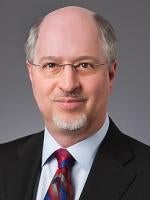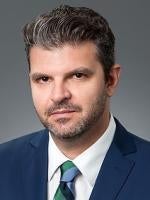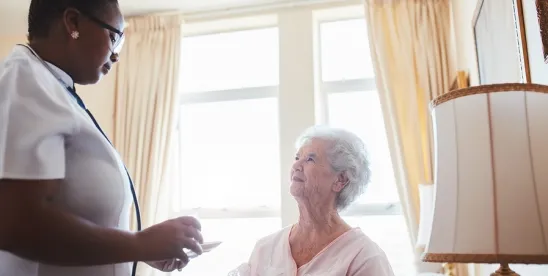San Francisco (Tuesday, January 9, 2018): Day 2 of the 2018 JP Morgan Healthcare Conference provided concrete examples of the trends that have been discussed in recent years – the impact of shifting healthcare delivery modalities on hospitals, the opportunity for retail medicine, the need for more effective management of chronic conditions and the increasing relevance of the Chinese markets. While some attendees complained about a lack of blockbuster announcements, today’s presentations were intriguing as an example of how the consulting and conference recommendations of the 2010 – 2014 period now are being played out in the real world of healthcare today. As the CEO of Advocate Health Care said, with tongue in cheek and quoting Game of Thrones, “Winter is coming….” and healthcare delivery will become even more difficult. There also was cause for optimism as well, as we saw multiple vibrant strategies for growth, including a continuing shift to value-based and risk-based reimbursement structures.
Hospitals – Generally, the health systems presenting conveyed the same message – decreasing inpatient utilization and declining emergency room visits – but in many cases without an appreciable negative impact on profit margin. Cost savings and revenue enhancement programs are being deployed in many cases at a level sufficient to offset the effect of such volume trends. As an example, Ascension noted a 2.1% year on year decrease in volume from 2016 on a same facility basis and also noted a 3.9% same period increase in same facility expense due in part (by almost half) to higher pharma spend and implant costs. Health systems are responding to this trend in various ways – some systems are growing revenue through acquisition of other hospitals, while others – like Ascension – are growing new businesses that relate to patient or industry needs or build on core competencies.
Retail Medicine Results – Interesting statistics regarding retail medicine clinics were shared by Illinois’ Advocate, which had acquired 56 retail clinics from Walgreens in May, 2016. Of the 400,000 patient visits to date, 62% were new to Advocate, far exceeding their expectations at the time of the purchase. Not only did the retail clinics help to drive patient acquisition, it also reportedly generated an additional $25 million in additional 2017 downstream revenue as reported by Advocate. Another view on retail medicine was shared by One Medical’s Amir Dan Rubin, the new Chief Executive Officer who previously was at Optum and earlier at Stanford and UCLA. To an overflow crowd, Amir shared how the initial direct to consumer approach now has been complemented by an employer focused strategy, with employers paying the $20 per month subscription fee for their employees. With soon to be 70 locations, One Medical is primary care focused and affords quick access through a combination of physical and virtual care, with provider messaging incorporated into their app. One Medical reported that its average time to a provider messaging response (One Medical does not use medical assistants) was approximately 10 minutes. Strikingly, One Medical also shared that approximately 97% of its members are commercially insured. One Medical includes investors such as JP Morgan, Google Ventures and Benchmark.
Chinese Healthcare – This year’s conference seems to have a higher number of Chinese national attendees, including both life sciences and healthcare companies as well as investors. There was significant participation by Chinese companies in the emerging companies category of presentations. We have seen a trend of Chinese companies looking to invest in U.S. healthcare companies, both for investment purposes and also to provide a knowledge base and platform for building similar services offerings in China. The Chinese aging population needs solutions for healthy living, skilled nursing, assisted living and other approaches, and we have seen multiple Chinese companies (both public and private) looking to the U.S. as one possible solutions toolbox.
Humana – Presenting for the first time in two years (due to the unconsummated Aetna deal), Humana reaffirmed its focus on seniors and chronic care management as expected. Interestingly, Humana stated that the current healthcare system is not well suited to manage chronic illness, so it intends to focus on touch points that can reduce emergent situations – home health, lifestyle, and monitoring with in-home systems (e.g., a current program using digital scales to monitor 2000 patients with congestive heart failure). Its partial acquisition of the Kindred home health business is meant to accelerate this focus, as 65% of its markets are overlapping between Humana plan offerings and Kindred offerings. Humana also shared its belief that placing nursing resources in contact with patients is essential to reducing costs – reportedly, 10% of Humana’s members use home health and account for 32% of acute spending, thereby affording an opportunity to structure programmatic care regimes and reduce costs. Looking at Humana’s move in home health care, remember the statement at last year’s JP Morgan conference by Genesis’s CEO that he expects the U.S. to run out of skilled nursing facility (SNF) beds by 2025 as the population ages. If that does occur (and more SNF beds cannot be satisfactorily constructed due to the prevailing Medicaid reimbursement rates not supporting a commercially reasonable return on investment in a typical investment period), effectively delivered and coordinated home health may become a key part of the cost reduction and population health management arsenal.




 />i
/>i

